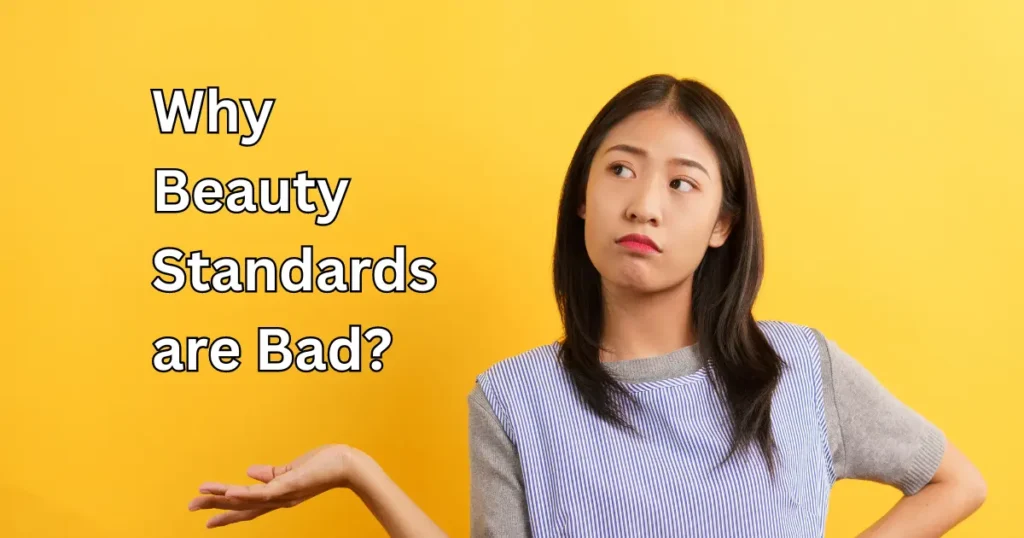Introduction
In a world dominated by glossy magazine covers and flawless Instagram feeds, the concept of beauty has taken center stage. However, beneath the surface lies a complex and often harmful system of standards that dictate what is considered beautiful. This article aims to unravel the intricacies of beauty standards and shed light on why they can be detrimental to individuals and society as a whole.
Defining Beauty Standards
What are Beauty Standards? Beauty standards are societal expectations regarding physical appearance, often perpetuated through media, advertising, and cultural norms. These standards typically favor certain characteristics over others, creating an idealized image that many feel pressured to conform to.
The Ever-changing Landscape Beauty standards are not static; they evolve over time and vary across cultures. What may be deemed attractive in one era or region can differ significantly from another. This fluidity raises questions about the arbitrariness and subjectivity of these standards.
The Impact of Beauty Standards
Psychological Toll
The Quest for Perfection From an early age, individuals are bombarded with images of flawlessness, leading to an unattainable pursuit of perfection. This constant comparison can result in low self-esteem, anxiety, and even mental health issues.
Body Dysmorphia Extreme preoccupation with conforming to beauty standards can contribute to body dysmorphia, a condition where individuals perceive flaws that may not exist. This distortion of self-image can have severe consequences on mental well-being.
Societal Ramifications
Perpetuating Stereotypes Beauty standards often reinforce stereotypes related to race, gender, and age. This perpetuation can lead to discrimination and exclusion, fostering an environment where certain groups are unfairly marginalized.
Impact on Relationships Unrealistic beauty ideals can strain relationships as individuals may feel inadequate or dissatisfied. This strain not only affects personal connections but also contributes to a culture of superficiality.
Breaking Down Beauty Standards
Embracing Diversity
Celebrating All Shapes and Sizes One crucial step in dismantling beauty standards is to celebrate diversity. Encouraging the acceptance of various body shapes, skin tones, and features fosters a more inclusive and compassionate society.
Representation Matters Media and advertising play a significant role in shaping beauty standards. By demanding and supporting representation of diverse bodies, we can challenge the narrow definition of beauty and promote a more realistic and inclusive portrayal of humanity.
Embracing Age and Individuality
Aging Gracefully Beauty standards often dictate youthfulness as the epitome of attractiveness, neglecting the beauty that comes with age. Embracing and celebrating the natural aging process helps shift perceptions and fosters a healthier outlook on beauty.
Individuality as a Strength Instead of conforming to a cookie-cutter ideal, individuals should be encouraged to embrace their unique features and quirks. These distinctive qualities contribute to genuine beauty and character, challenging the homogeneity promoted by beauty standards.
Economic Impact
Consumerism and the Beauty Industry The beauty industry thrives on perpetuating certain beauty standards, creating a constant demand for products promising to enhance or alter one’s appearance. This consumer-driven culture contributes to environmental issues and economic strain on individuals trying to keep up with ever-changing trends.
The Cost of Conformity Conforming to beauty standards often requires financial investments in cosmetic procedures, skincare products, and fashionable clothing. This financial burden disproportionately affects individuals who may already be struggling economically, widening societal inequalities.
Empowering Individuals
Self-Love and Acceptance
The Journey to Self-Love Empowering individuals to embrace their unique qualities is key to overcoming the negative impact of beauty standards. Self-love and acceptance create a foundation for a healthier self-image and improved mental well-being.
Mindfulness Practices Incorporating mindfulness practices, such as meditation and positive affirmations, can help individuals detach from societal pressures and cultivate a deeper understanding of their worth beyond physical appearance.
Building Confidence
Cultivating Confidence Confidence is a powerful antidote to the damaging effects of beauty standards. Encouraging individuals to focus on their accomplishments, skills, and personal growth enhances self-esteem and diminishes the importance placed on external validation.
Educational Programs Implementing educational programs that promote self-esteem and body positivity in schools can contribute to building a generation that is more resilient to the negative impacts of beauty standards.
Redefining Beauty for the Future
Education and Awareness
Critical Media Literacy Education is a powerful tool for change. Promoting critical media literacy helps individuals recognize and question the unrealistic portrayals perpetuated by the media. By arming people with the skills to deconstruct beauty standards, we empower them to resist harmful influences.
Changing the Conversation Shifting societal dialogue around beauty involves challenging harmful language and promoting a more inclusive narrative. Encouraging conversations that highlight the importance of character, kindness, and individuality over physical appearance can reshape societal values.
Legislative Measures
Regulating the Fashion and Advertising Industry Governments and regulatory bodies can play a role in curbing the negative impact of beauty standards by implementing measures to ensure diverse representation in the fashion and advertising industries. This can include guidelines on avoiding digitally altered images and promoting realistic portrayals of beauty.
Addressing Discrimination Legislation should address discrimination based on physical appearance, reinforcing the idea that everyone has inherent value regardless of how well they conform to societal beauty norms.
Conclusion
In conclusion, the negative impact of beauty standards on individuals and society is undeniable. By acknowledging the harm they cause and actively working towards dismantling these standards, we can foster a more inclusive, compassionate, and mentally healthy world. Embracing diversity, empowering individuals through self-love, redefining beauty for the future, considering economic impacts, and implementing legislative measures are crucial steps in this transformative journey. It’s time to break free from the constraints of beauty standards and embrace the beauty that comes from authenticity, diversity, and a genuine celebration of individuality.



